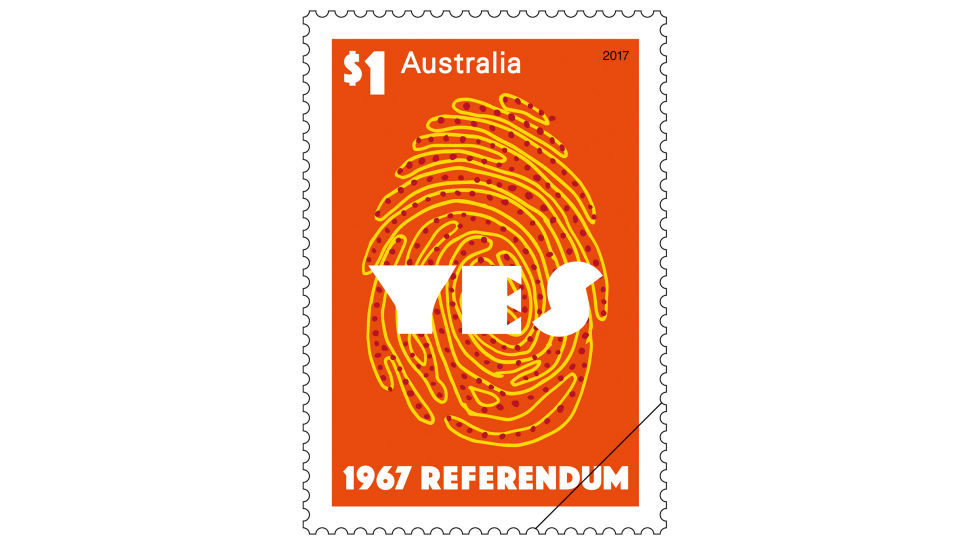Prior to the historic 1967 federal referendum, Aboriginal and Torres Strait Islander peoples did not have the same rights as other Australians under the constitution: the federal government could make special laws in relation to any Australians other than Aboriginal and Torres Strait Islander people, who were instead subject to the varying and often highly discriminatory laws of state governments. In Queensland, for example, Aboriginal and Torres Strait Islander people could not vote in state elections until 1965 and, prior to 1967, there were restrictions on Aboriginal and Torres Strait Islander people in relation to property ownership and marriage. Aboriginal and Torres Strait Islander people were also excluded from the census.
On 27 May 1967, Australians voted on two issues. The first related to the balance of numbers in the Senate and the House of Representatives. The second issue, the one for which the referendum is remembered, concerned changes to the constitution that would empower the federal government to make legislation for Aboriginal and Torres Strait Islander people, in the same way it could for all other Australians, and would include Aboriginal and Torres Strait Islander people in the census.
The sections under consideration were 51 and 127, which were worded as follows:
51. The Parliament shall, subject to this Constitution, have power to make laws for the peace, order, and good government of the Commonwealth with respect to:-
... (xxvi) The people of any race, other than the aboriginal people in any State, for whom it is necessary to make special laws.
127. In reckoning the numbers of the people of the Commonwealth, or of a State or other part of the Commonwealth, aboriginal natives should not be counted.
By 1967, the mood to rid the constitution of discrimination was growing, including within parliament. In fact, a “no” campaign was never even formulated. The vote was decisive, with 90.77 per cent of Australians voting “yes”. In the wake of the vote, the Constitution Alteration (Aboriginals) Act 1967 (Cth) received assent on 10 August 1967.
With its new powers, the federal government also established the Council for Aboriginal Affairs, which brought together ministers from all states and territories to discuss relevant issues and make recommendations to the federal government. The first Minister for Aboriginal Affairs, WC Wentworth, was appointed in February 1968, and programs were established to address specific needs of Aboriginal and Torres Strait Islander populations, such as programs to improve healthcare.
A number of important pieces of legislation were enacted, including, in 1975, legislation to address Queensland’s discriminatory laws, and, later, the Native Title Act 1993 (Cth). This year will be 25 years, in fact, since the landmark 1992 High Court decision in the Eddie Mabo case, which declared invalid the 17th-century doctrine of terra nullius (that no one had established rights to Indigenous lands prior to European settlement) and declared that the Meriam People of the Torres Strait held “native title” over parts of their traditional lands.
Another important outcome of the 1967 referendum was a symbolic one. The “yes” vote, was a powerful statement of recognition for Aboriginal and Torres Strait Islander peoples and helped to bring a sense of unity to all Australians, the overwhelming majority of whom had voted decisively to end constitutional inequality.
On 27 May 2017, it will be 50 years since the historic “yes” vote took place. To commemorate this significant event, Australia Post released a stamp on 24 May 2017.
The stamp design, by Goreng Goreng artist Rachael Sarra, seeks to capture the unifying impact and acknowledgement the 1967 referendum had on the narrative of Australia’s identity. Contemporary dot art elements and curved lines form a simple yet powerful symbol of two fingerprints merging to form one.
The dotted print represents the fundamental place Aboriginal and Torres Strait Islander people and culture have in this story. Inspired by the iconic referendum-campaign font, “yes” boldly sits over the fingerprint, symbolising our strength in unity and what has been thus far achieved.
Rachael Sarra is a senior designer at Gilimbaa, an Indigenous design agency based in Brisbane. In the language of the Wakka Wakka people of Central Queensland, Gilimbaa means “today”, which represents the design team’s desire to keep Aboriginal and Torres Strait Islander culture and community at the forefront of creative innovation and design.
The 1967 Referendum stamp issue is available from 24 May 2017, online, at participating Post Offices and via mail order on 1800 331 794, while stocks last.
View the gallery of stamps and technical details for this issue.
This article was produced at the time of publication and will not be updated.


